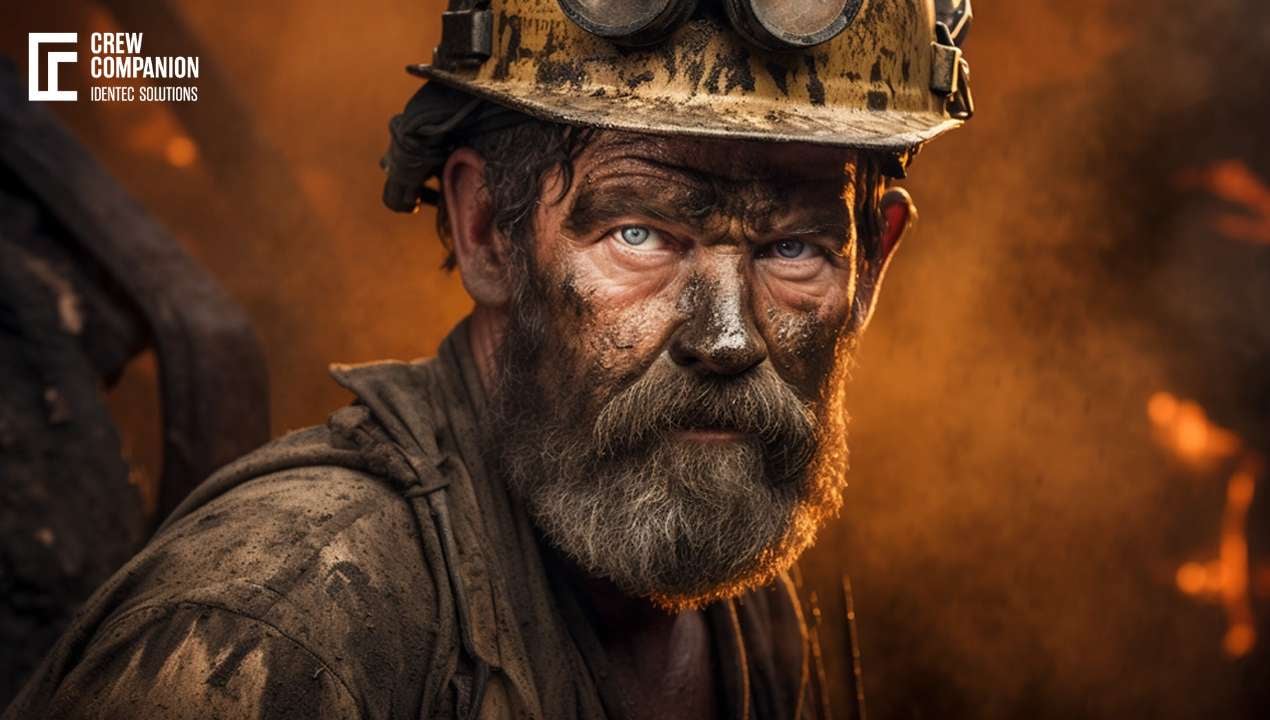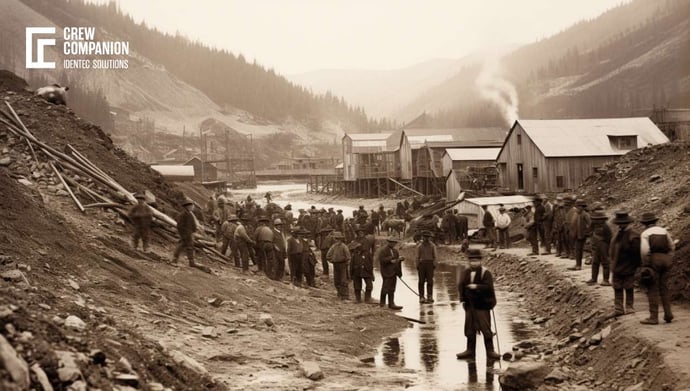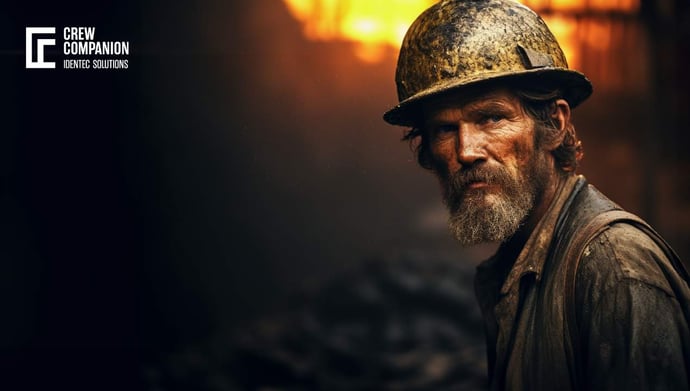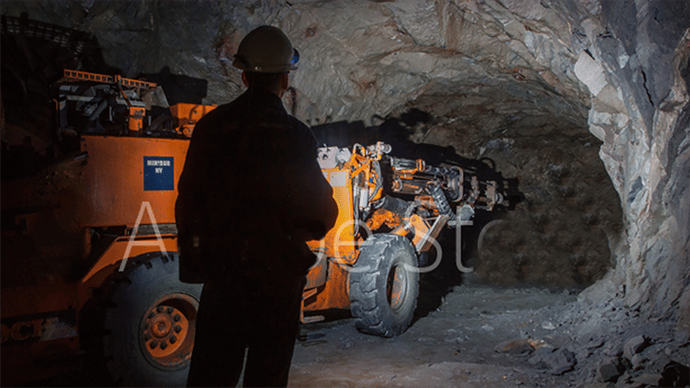Mining Industry of Australia - Part 2
| Written by Michal Wozniakowski-Zehenter

No video selected
Select a video type in the sidebar.
How does Mining in Australia Impact the Environment?
The mining industry in Australia is confronted with substantial environmental challenges, crucially requiring immediate action. Among these, the effect on the Great Barrier Reef stands out. This iconic natural habitat is at risk due to mining activities nearby, triggering widespread concern over potentially irreversible damage like water pollution and the destruction of habitats. In response, the sector has shifted towards more eco-conscious practices. At the beginning of 2023, for the first time in history, Australia blocked the creation of a coal mine under environmental laws. The government rejected a proposal for a new mine about 10km (6.2 miles) from the Great Barrier Reef. Strengthened environmental regulations aim to protect natural habitats, focusing on reducing carbon emissions, preserving water, and diminishing the mining industry's ecological impact. The goal is to harmoniously balance economic development with ecological responsibility, ensuring mining does not harm Australia's varied ecosystems.
Another significant environmental concern is the impact of mining on indigenous territories and communities. Minerals are often found under land that's culturally and spiritually significant to indigenous peoples. Mining in these areas has sparked land rights disputes, with indigenous communities fighting for their lands. The result has been a wider discussion about Indigenous rights during industrial expansion and the need for mining companies to be more respectful and fairer. To lessen the impact of mining on indigenous lands, the mining industry started community engagement programs and strategies. In these initiatives, miners and indigenous communities work together more cooperatively, preserving culture and the environment alongside mining's benefits.
Technologies for an easier future
The Australian mining industry's embrace of technological advancements has significantly reshaped its operational landscape, establishing it as a global benchmark in mining innovation. This industry's evolution is marked by the integration of state-of-the-art mining techniques and equipment, which have revolutionized the way resources are extracted. Precision drilling and advanced geological mapping facilitate efficient extraction while minimizing environmental impact. The deployment of remote-controlled and semi-autonomous machinery has not only boosted productivity but has also ensured enhanced safety by operating in environments that are hazardous for humans. A key feature of this technological revolution is the extensive use of automation and artificial intelligence (AI). AI-driven analytics contribute to predictive maintenance, enhancing operational efficiency by minimizing downtime. Automated trucks and drills streamline processes and limit human involvement in high-risk tasks, while real-time monitoring and decision-making optimize every stage of mining, from exploration to ore processing. Epiroc is working with Western Australia iron ore mine Roy Hill to convert the mine’s mixed fleet of haul trucks to driverless operation. The project, located in the Pilbara region of Western Australia, will mark the world’s largest single autonomous mine and is expected to be completed in 2024.
Safety and efficiency in mining operations have improved significantly, largely due to these technological strides. Wearable technologies and sensors are now commonly employed to track workers' health and environmental conditions, drastically reducing accident risks. Advanced communication systems ensure effective coordination and swift emergency responses. Additionally, data analytics and machine learning have refined resource management, leading to reduced environmental impacts.
Technological innovation has also helped with environmental management. After mining activities are over, tools like drone surveillance and satellite imagery are crucial for monitoring the environment's effects. For maintaining ecological balance and complying with environmental regulations, these technologies provide essential data. The mining industry is trying to reduce its carbon footprint, so they're adopting renewable energy, like solar and wind power, especially in remote areas. As a result, we're reducing our dependence on fossil fuels and aligning with global climate change initiatives. Moreover, we're working on low-emission mining technologies.
How is the Mining Industry of Australia Regulated?
Despite the fact that the Australian Government doesn't regulate WHS in the mining industry, states and territories do. It has extensive and multifaceted policies and regulations because of its significant impacts on the economy, environment, and society. Both the federal and state levels regulate a wide range of topics, like worker safety, environmental compliance, and indigenous rights. They're all about being environmentally responsible. Mining companies in Australia are required to minimize their ecological footprint so they don't adversely affect the landscapes and ecosystems of the country. They're in place so mining practices are sustainable and don't hurt the natural environment.
There's also worker safety, which is known for its hazards and has rigorous safety regulations. The standards mandate comprehensive safety protocols, regular training for workers, and the use of advanced mine safety equipment. To keep workers safe and healthy, we're trying to minimize accidents. In recent years, a lot of attention has been focused on indigenous community rights. Before mining on indigenous lands, the government requires mining companies to consult with them and get their permission. Taking this approach acknowledges the land's spiritual and cultural significance to Indigenous peoples and aims to make mining more inclusive and respectful. Governments do a lot more than just regulate mining. They also support and facilitate it, balancing economic benefits with social and environmental issues. It's important that the Australian government promotes mining so it can access new markets and technologies. In order to keep the industry competitive and sustainable, it needs to play both regulator and promoter roles. Recent legislation changes have stressed the importance of indigenous rights and environmental sustainability. Mining companies have to change their practices because of these changes. This means government policies and regulations shape the future of the mining industry in Australia, ensuring that it's sustainable and responsible.

Foreign capital
Investments are indeed needed. In June 2024 Victoria's mining industry has been set alight with a $183m investment from a big US mining company into a long-established mineral sands project near Donald in the Wimmera. Astron Corporation's mineral sands and rare earths project has won the backing of Energy Fuels, the largest uranium producer in the US.
Minister for Resources of Australia said in March 2024 in an interview with David Lipson for ABC AM (1), “We're keen to work together (with the US) on critical minerals and rare earths. The President and our Prime Minister signed the Compact with critical minerals development at its heart, and critical minerals will be needed to help decarbonise both of our economies. Well we already have a lot of US investment in Australia, yeah, so absolutely. We are good friends and good partners. We are both democracies that respect the work of capital within our economies so I do expect that we'll see more interest from the US through their Export‑Import Bank, which is similar to our Export Finance Australia, but also as everyone knows the Department of Defence has also invested strategically within Australian facilities and supports Australian facilities in America as well. So they're important partners for our critical minerals development.”
Mining in Australia: Global Scene and the Future
As one of the key players in the international mining scene, Australia is well known for its vast reserves of minerals and reputation for technological innovation. Despite its dominant position in the global mineral export market, it faces challenges and requires continuous adaptability and foresight because of its rich reserves of iron ore, coal, gold, and rare earth elements. Australia faces intense and multifaceted competition from other mining powerhouses around the world in the mining sector.
With its significant mineral resources, countries like Canada, Brazil, and China are always competing with Australia. This competitive environment calls for continuous innovation and strategic positioning. Australian mining companies must keep improving their operations, investing in the latest mine technology, and exploring sustainable mining practices to stay ahead of the game. The way Australia approaches partnerships and trade agreements plays a big role in reinforcing its global mining status in international relations. International partnerships and trade agreements help the country secure mineral markets and source necessary mining imports. As well as cementing Australia's position in the global mining community, these agreements also help it navigate the complexities of international trade. Looking forward, the Australian mining industry is poised to experience fluctuating demands for different minerals (see also: Critical minerals strategy for the Energy Transition).
These trends are largely influenced by global economic shifts, such as the rise of renewable energy sources impacting the demand for coal and technological advancements, like the growing need for rare earth elements in high-tech industries. Australian mining companies must stay attuned to these market dynamics to respond effectively and adapt. Exploration for new mining regions and untapped resources is an ongoing venture essential for the expansion and sustenance of Australia's mining industry. The discovery of new mineral deposits is critical in ensuring the longevity and vitality of the sector, especially in the face of depleting resources in existing mines.
However, the industry is not without its challenges. Market volatility remains a constant concern, with fluctuating commodity prices impacting profitability and investment. Environmental concerns, particularly the industry's impact on climate change and ecosystem preservation, are increasingly at the forefront of public and regulatory scrutiny. Additionally, a shortage of workers (learn more about the mining workforce of tomorrow) and evolving global trade dynamics, such as trade disputes and shifts in global economic power, present complex challenges that require adaptive strategies and innovative solutions.
FAQS
Is the mining industry in Australia big?
The size of Australia's most prominent coal mines is increasing. Following New South Wales' (NSW) recuperation from recent floods, mining operations in the area are intensifying their output. Presently, there are six mines within NSW that have reached the capacity to sell a million tonnes of coal each month.
Is mining in Australia dangerous?
Safe Work Australia has identified several key sources of injuries commonly encountered in mining environments. The predominant issue is body stress, which often results from manual tasks such as lifting, carrying, or moving heavy items. This physical exertion can lead to muscle strains and other related injuries. Additionally, slips, trips, and falls constitute a significant risk, potentially resulting from uneven surfaces, wet conditions, or obstacles in the working area.
Another major concern is the danger posed by moving objects or machinery. Workers in mines are at risk of being struck by or caught in machinery, leading to a range of serious injuries. The use of high-risk equipment in mining also contributes to the injury statistics. Due to its power, size, or complexity of operation, this equipment can be a source of accidents if not handled with the necessary expertise and caution.
Takeaway
Clearly, Australia's mining industry is at a turning point where it must evolve and innovate. Besides being the cornerstone of the national economy, the mining industry is also a major player internationally. The company's future trajectory will be determined by its ability to balance economic growth with environmental sustainability and social responsibility. When the industry grapples with environmental issues, technological advances, and shifting global market dynamics, this balance becomes even more crucial. As a result of these challenges, the mining sector will shape its reputation and effectiveness by adopting more sustainable mining practices, engaging with indigenous communities, and embracing technological advances. In addition to influencing Australia's economic success, how well its mining industry navigates these complex and interconnected challenges will determine its legacy as a responsible steward of the environment. It's not just a business imperative that the industry moves toward a more ethical and sustainable future but a necessary evolution as a result of its pivotal role in both the Australian and global economy.
Learn more about the mining industry of Australia in the 1st part of the series.
Delve deeper into one of our core topics: Miner Safety
Glossary
Haul trucks are heavy-duty, off-road dump trucks designed for high-production mining and demanding construction operations. These vehicles are built to transport large volumes of material efficiently. Most haul trucks feature dual axles, though a few tri-axle models were produced in the 1970s. They are classified based on their payload capacity, measured in tons, tonnes, or kilograms.
The largest and most powerful haul trucks belong to the ultra-class category, which includes vehicles with a payload capacity of 300 short tons (270 long tons) or more. These massive trucks play a critical role in large-scale mining operations, improving efficiency and productivity. Their advanced engineering allows them to operate in harsh environments, making them essential for modern mining and heavy construction projects. (3)
Sources:
(1) https://minister.infrastructure.gov.au/m-king/interview/transcript-interview-abc-am
(2) https://minerals.org.au/resources/mining-continues-to-underpin-the-australian-economy/
(3) https://en.wikipedia.org/wiki/Haul_truck
Note: This article was updated on the 11th of February 2025

Author
Michal Wozniakowski-Zehenter, Marketing Manager
Michal Wozniakowski-Zehenter is an experienced marketing and project management professional. He spent most of his career on projects with a strong focus on digital marketing and event management. He is a very active voice representing offshore and mining industries through social media channels. Michal writes mainly about offshore oil and gas, renewable energy, mining and tunnelling. Compiling and sharing the knowledge within industries is one of his goals.




